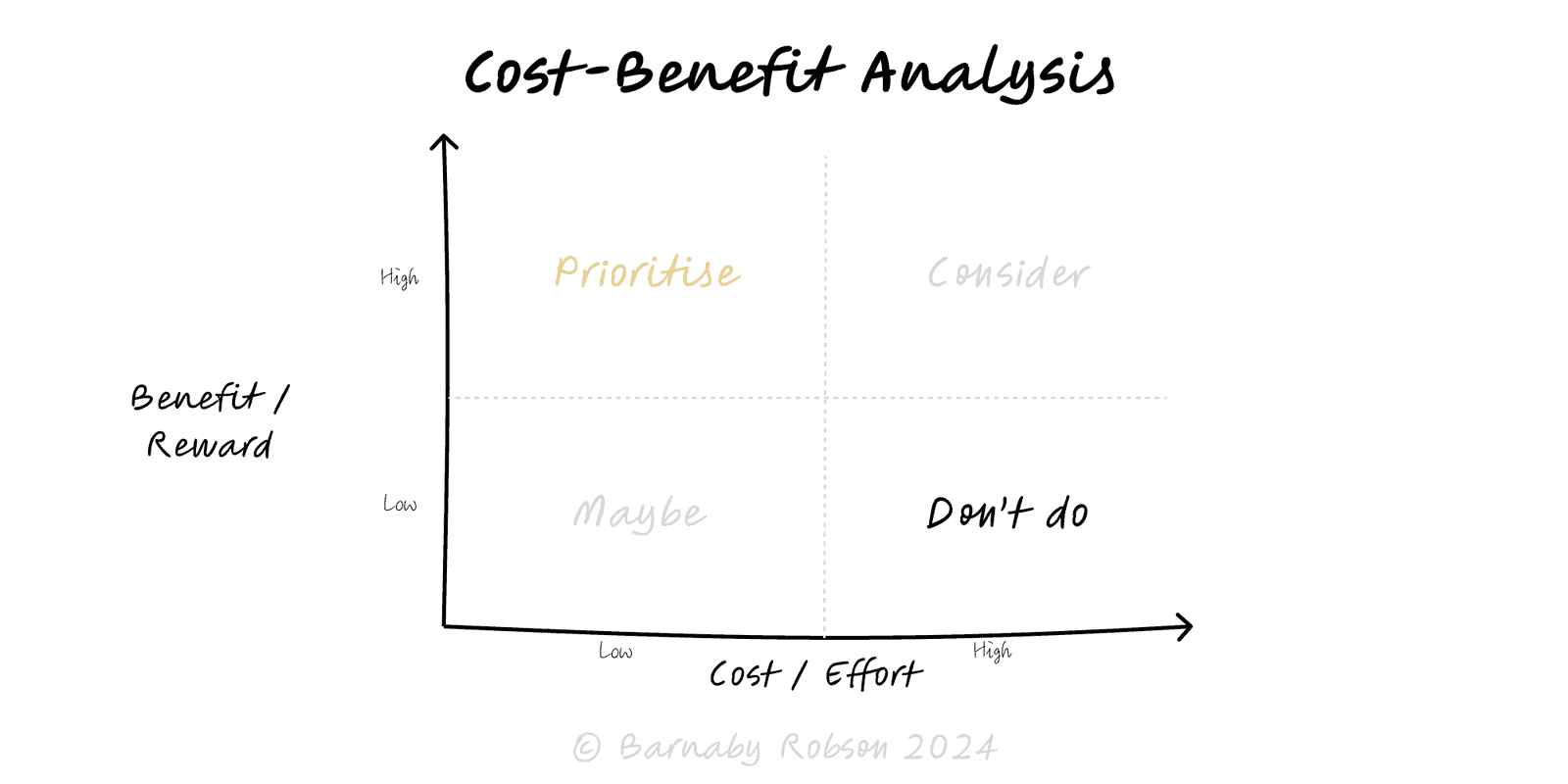Cost-Benefit Analysis
Managerial decision-making (simple cost–benefit prioritisation)

This is the lightweight, visual form of cost–benefit analysis. Instead of detailed NPV spreadsheets, you estimate benefit and effort/cost on consistent scales and place items on a 2×2 grid. It’s ideal for backlog grooming, roadmap picks and operational improvements where speed and clarity matter.
Axes
- Y: Benefit / Reward – expected impact on the goal (revenue, risk reduction, time saved, customer value).
- X: Cost / Effort – money, people, time, risk, complexity.
Quadrants
- High benefit, low cost — Prioritise: quick wins and high-leverage moves.
- High benefit, high cost — Consider: stage, prototype, or seek funding; de-risk before full commit.
- Low benefit, low cost — Maybe: do only if dependencies are simple or as filler work.
- Low benefit, high cost — Don’t do: decline or rethink.
Backlog grooming and sprint planning.
Portfolio and roadmap selection.
Ops improvements and process changes.
Compliance and risk mitigations triage.
Define benefit and cost scales – e.g. 1–5 or T-shirt sizes; write what each level means.
Score together – cross-functional group estimates both axes; capture assumptions.
Plot the items – place each initiative on the grid; cluster similar ones.
Decide –
Prioritise the top-left first.
For top-right, break into milestones or run a small proof-of-value.
Bottom-left only if they unblock others.
Bottom-right is a no unless the idea can be redesigned.
Add guardrails – owner, success metric, review date; re-plot when facts change.
Hand-wavy scales – define benefit and cost levels up front or estimates drift.
Optimism bias – inflate benefit, deflate effort; counter with ranges and a quick premortem.
One metric only – if benefits are mixed (revenue + risk), agree a composite or use separate grids.
Crowding the middle – force choices by limiting how many can sit in “Consider” or “Maybe”.
Never upgrading evidence – for big bets in “Consider”, follow up with a proper NPV/EV analysis.